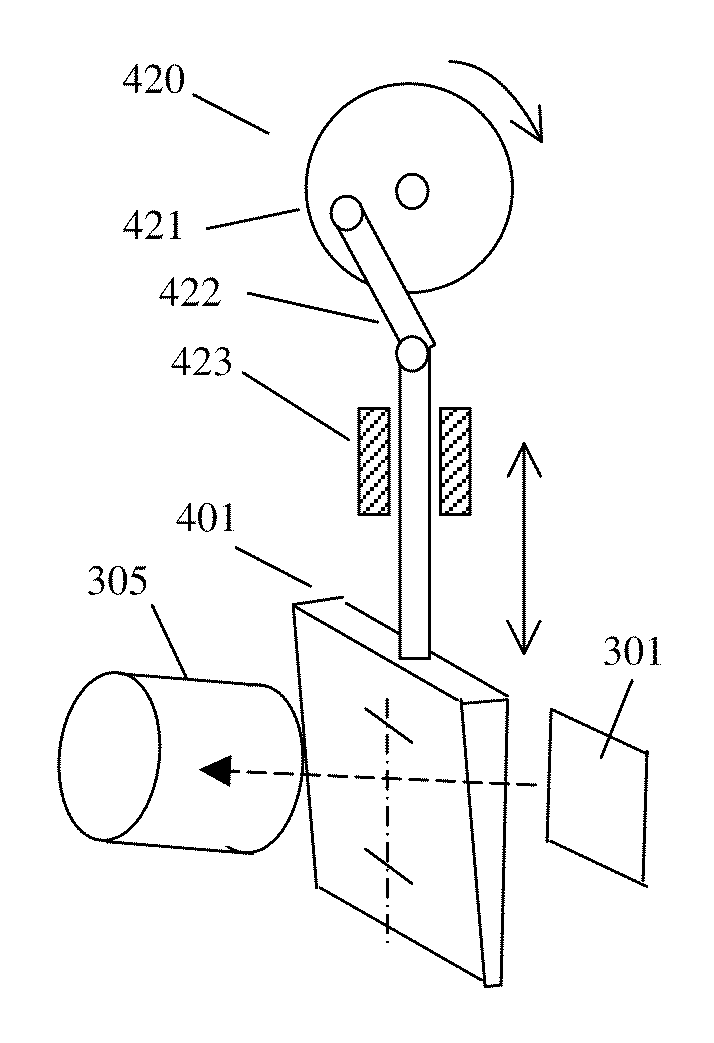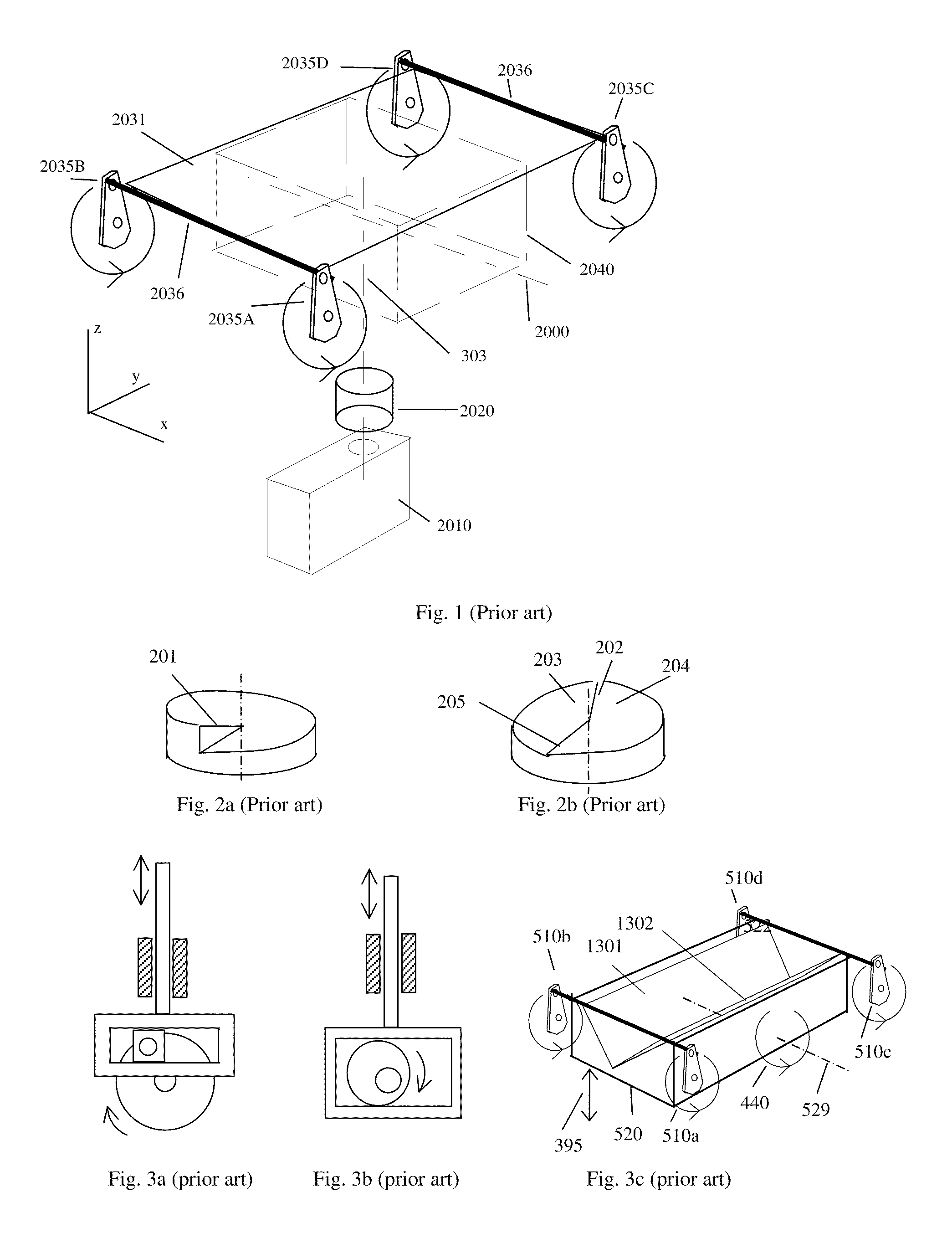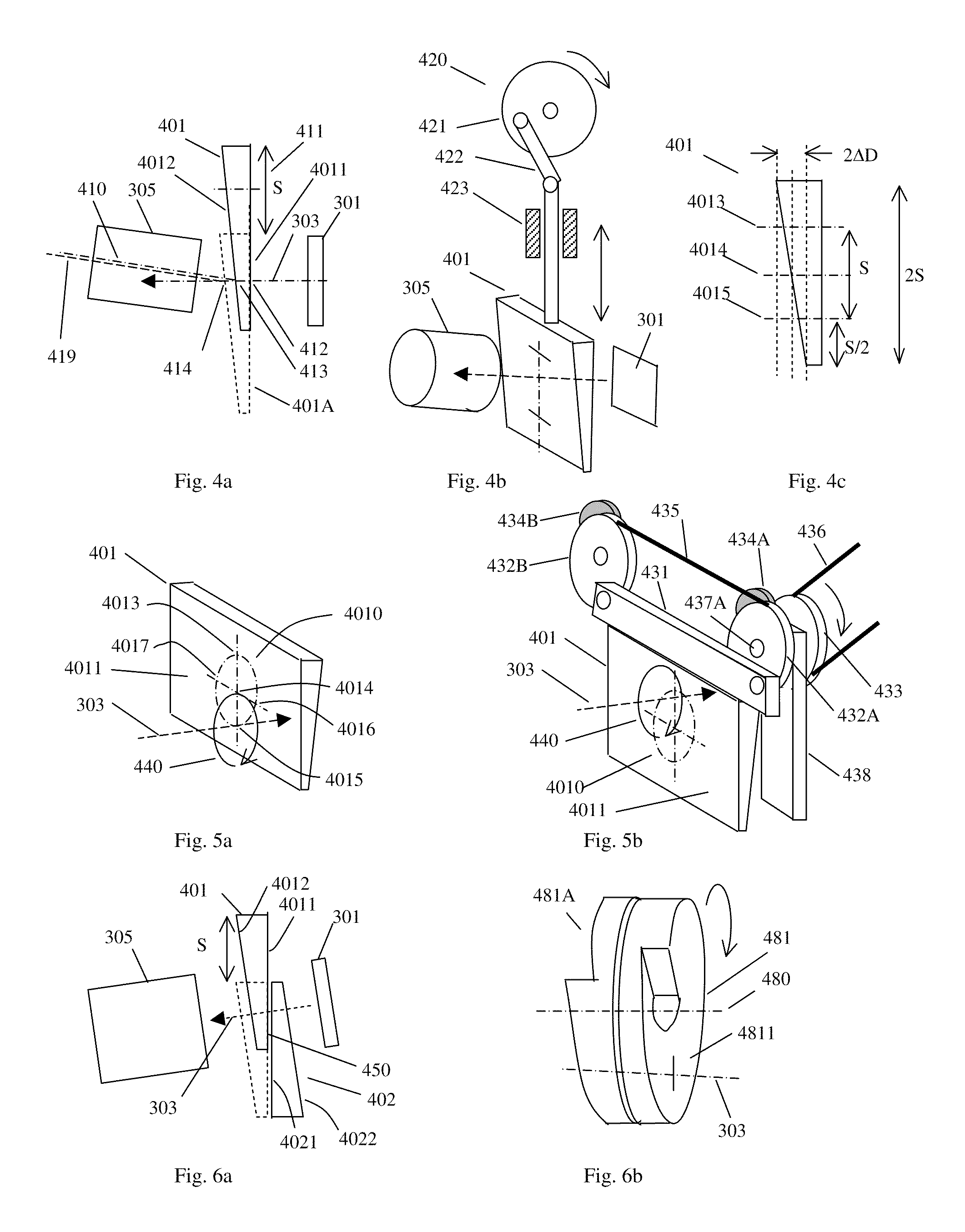Methods and systems of rapid focusing and zooming for volumetric 3D displays and cameras
a volumetric 3d display and zooming technology, applied in the direction of camera focusing arrangement, printers, instruments, etc., can solve the problems of insufficient light passing through liquid lenses, difficulty in achieving piezoelectric lens achievement, and cost, and achieve rapid and repeated change, constant magnification, and rapid zoom
- Summary
- Abstract
- Description
- Claims
- Application Information
AI Technical Summary
Benefits of technology
Problems solved by technology
Method used
Image
Examples
Embodiment Construction
[0059]In a typical V3D display, a small SLM (spatial light modulator) is used as the image source. The moving screen is large relative to the SLM. That is, magnification is large and Image distance is large relative to object distance. Referring to lens formula equations (A1) and (A2) of Appendix A, when a small object with a small So is projected to a large distance (large Si), a slight change of So creates large change of Si. Appendix B shows an example of projection design for a V3D display. A SLM of 8.75 mm height is projected to form a volume length of 5.625″ (142.88 mm). The required stroke (direct distance of screen motion from bottom to top) is 3″ (76.2 mm). A projection lens of f=36 mm is used. By lens formula equation (A1), a change of So of only 0.29 mm gives a change of Si of 3″ (76.2 mm). For cases of larger magnifications, the required change of So is even smaller. In addition, Appendix B indicates another important observation: the So to Si curve can be approximated b...
PUM
 Login to View More
Login to View More Abstract
Description
Claims
Application Information
 Login to View More
Login to View More - R&D
- Intellectual Property
- Life Sciences
- Materials
- Tech Scout
- Unparalleled Data Quality
- Higher Quality Content
- 60% Fewer Hallucinations
Browse by: Latest US Patents, China's latest patents, Technical Efficacy Thesaurus, Application Domain, Technology Topic, Popular Technical Reports.
© 2025 PatSnap. All rights reserved.Legal|Privacy policy|Modern Slavery Act Transparency Statement|Sitemap|About US| Contact US: help@patsnap.com



